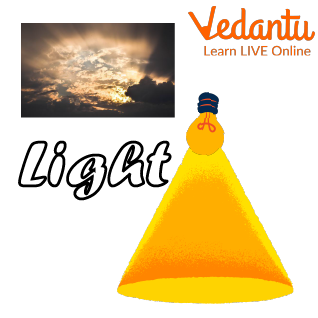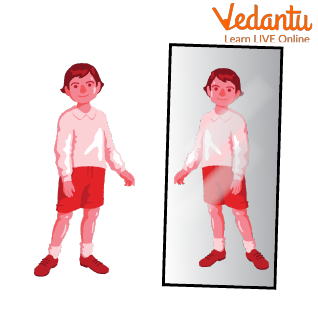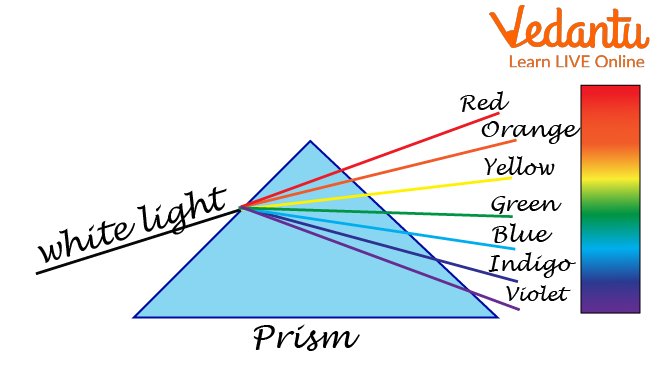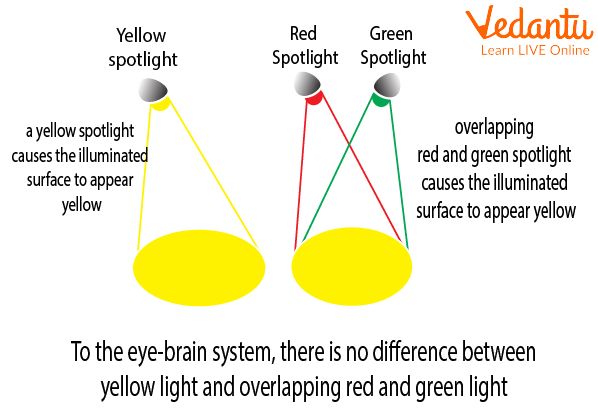




Why Is Light Important in Everyday Life?
We are surrounded by light. In addition to allowing us to see in the dark, light's unique attributes are crucial to many elements of our life. We are kept safe by reflections in the rearview mirrors of moving vehicles. Some people can see better, thanks to refraction through contact lenses or eyeglass lenses.
We can communicate with our TVs by sending pulses of infrared light as signals and listening to radio broadcasts too via EM waves. The focus of this backgrounder is on visible light and our interactions with it. You will learn the definition of light in this article, along with some fascinating information about light.
What is Light?
Light is an electromagnetic radiation that the human eye can perceive. From radio waves with wavelengths measured in metres to gamma rays with wavelengths shorter than around 1 x 10−11 metres, electromagnetic radiation occurs throughout a very broad range of wavelengths. Luminous objects emit light, which is a type of energy. Luminous items include the Sun, a bulb, a candle, etc. Non-luminous items are other objects that do not emit light. Translucent materials can let light through them faintly.

Light
Sources of Light for Kids
One can say that there are many sources or types of light. But primarily, they are categorised under:
Natural Source
Look around yourself, you will find numerous natural sources that emit light. Let us talk about certain sources in nature that give us light. Natural source of light examples include the following:
Sun: It is the primary source through which we get natural light. It is an enormous ball of fire that produces tremendous energy. This energy further reaches us as light and heat.
Stars: Every star generates light too. But as the distance between the stars and the earth is quite huge, only a small amount of light reaches the earth.
Moon: Though the moon does not produce light on its own, the light we get from the moon is reflected from the sun.
Some living organisms also produce light, like fireflies, jellyfish, and glow worms. This is called bioluminescence because of certain chemical reactions with these microorganisms.
Natural phenomena like volcanic eruptions and lightning also give us light.
Artificial Source
Of course, we get light from natural sources, but there are certain man-made sources from which light is produced. They are:
Incandescent Sources: When we heat an object at a high temperature, it can emit light. E.g. candles
Luminescent Sources: When we pass a current through the material, light can be produced. E.g. electric bulb, tube light
Properties of Light
The speed of light in a vacuum (a space devoid of air) is about 299,792,458 metres per second (m/s). The term "light speed" refers to this value. It can move at the speed that nothing else in the universe can! In contrast, the sound wave travels at only about 300 m/s per second. Due to this, lightning is usually visible before thunder in a storm.
Transparent objects allow light to pass through them and pass through to the other side. We can, therefore, see through translucent objects.
Most of the light that strikes rough, opaque materials is absorbed and converted to heat energy. Light is primarily absorbed by a black surface.
Light reflects off of a glossy, smooth surface in a certain way when it hits it. This is how we are able to see ourselves in the mirrors.

Reflection
Colours of Light
Light is mostly composed of the colours red, green, and blue. Yellow, magenta, and cyan are the secondary colours of light. Red, blue, and green lights are used in varying proportions on computer screens to create all the colours you see. White light is made up of the seven colours of rainbow, when the primary colours of light are blended.

Different Colours Obtained from White Colour
How Do Humans Perceive Light?
Non-luminous items that are exposed to white light reflect some colours while absorbing the others. The colour of light that an object reflects determines its colour. If an item reflects red light and absorbs all other colours, it appears red.
Three different types of photoreceptor cells, each sensitive to long, medium, and short wavelengths of visible light are used by the human eye to interpret colour. For instance, the perception of yellow light wavelengths is the same as that of red and green light combined.
This is due to the similar stimulation they provide for the cells in the eye. In other words, whereas pure yellow light and a mixture of red and green light are physically distinct, we see them both as yellow.

Yellow Light Appearance
Interesting Facts About Light
Light is a form of energy. Light waves travel in straight lines away from the light source until the waves hit something. Below are interesting facts about light.
Humans are unable to see portions of the electromagnetic spectrum that other animals can. For instance, many insects are capable of seeing ultraviolet (UV) light.
The human eye cannot see infrared light as its wavelength is too long.
In the field of optics, a subfield of Physics, researchers investigate the characteristics and behaviours of light.
Light takes 1.255 seconds to reach the Moon from the Earth.
Glass, water, and air are some of the different media where light moves more slowly.
Summary
The light is comprised of different colours. The colour which is visible to humans is reflected while others are absorbed by the object. It showed the mechanism of how humans perceive light and distinguish colours. We also know that light is a form of energy. It travels in straight lines. Light waves travel in straight lines away from the light source until the waves hit something.
FAQs on Facts About Light: Definition, Properties & Interesting Uses
1. What is light in physics?
In physics, light is defined as a form of electromagnetic radiation that is visible to the human eye. It is composed of tiny energy packets called photons, which exhibit properties of both waves and particles. Light travels in straight lines and is the fastest known thing in the universe.
2. What are the main sources of light?
Sources of light are broadly categorised into two types based on how they produce light:
- Natural Sources: These exist in nature without human intervention. Examples include the Sun, stars, lightning, and bioluminescent organisms like fireflies.
- Artificial (Man-made) Sources: These are created by humans. Examples include electric bulbs, candles, tube lights, and LED lamps.
3. What is the speed of light?
The speed of light in a vacuum (a space with no matter) is a universal constant, approximately 299,792,458 metres per second. For general calculations, this is often rounded to 3 x 10⁸ m/s. The speed of light is slower when it passes through different mediums like water or glass.
4. What are the key properties of light?
Light exhibits several key properties that are fundamental to optics. The most important ones for students to understand are:
- Rectilinear Propagation: Light travels in a straight line in a uniform medium.
- Reflection: Light bounces off a surface when it strikes it. This is how mirrors work.
- Refraction: Light bends when it passes from one medium to another, such as from air to water.
- Dispersion: White light splits into its constituent seven colours (VIBGYOR) when passed through a prism.
5. How does light allow us to see the colour of an object?
The colour of an object we perceive depends on the wavelengths of light it reflects. When white light (which contains all colours) hits an object, the object's surface absorbs some colours and reflects others. For example, a red apple appears red because its surface reflects red light while absorbing all other colours. Our eyes detect this reflected red light, making us see the apple as red.
6. Why do we see lightning before we hear thunder?
We see lightning before hearing thunder because light travels much faster than sound. Light travels at about 300,000,000 m/s, while sound travels at only about 343 m/s in air. Since the lightning flash and the thunder clap are created at the same time, the light reaches our eyes almost instantly, whereas the sound takes several seconds to travel the same distance.
7. Can light travel in a vacuum? Explain its dual nature.
Yes, light can travel through a vacuum because it does not require a medium for propagation. This is explained by its dual nature, meaning it behaves as both a wave and a particle. As an electromagnetic wave, it can travel through empty space. As a particle (photon), it carries energy and momentum. This unique dual characteristic is a core concept in modern physics.
8. What is the difference between luminous and non-luminous objects?
The key difference lies in their ability to produce light. Luminous objects are those that generate and emit their own light, such as the Sun, a lit candle, or an electric bulb. In contrast, non-luminous objects do not produce their own light; we can only see them when they reflect light from a luminous source. Examples include the Moon, a table, or a book.
9. Why does an object appear white or black?
An object's appearance as white or black is determined by how it interacts with the colours in white light. An object appears white because it reflects all the colours (wavelengths) of light that fall on it. Conversely, an object appears black because it absorbs all the colours of light, reflecting none back to our eyes.









